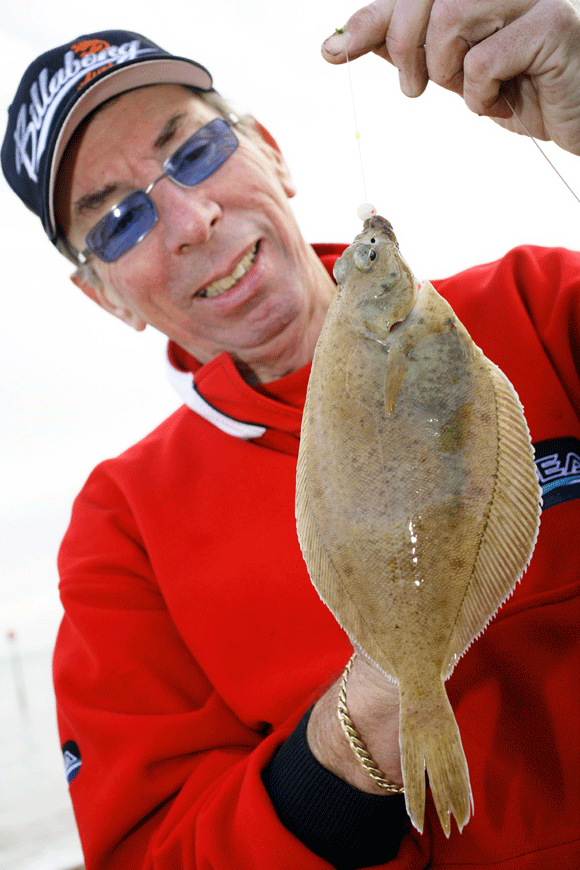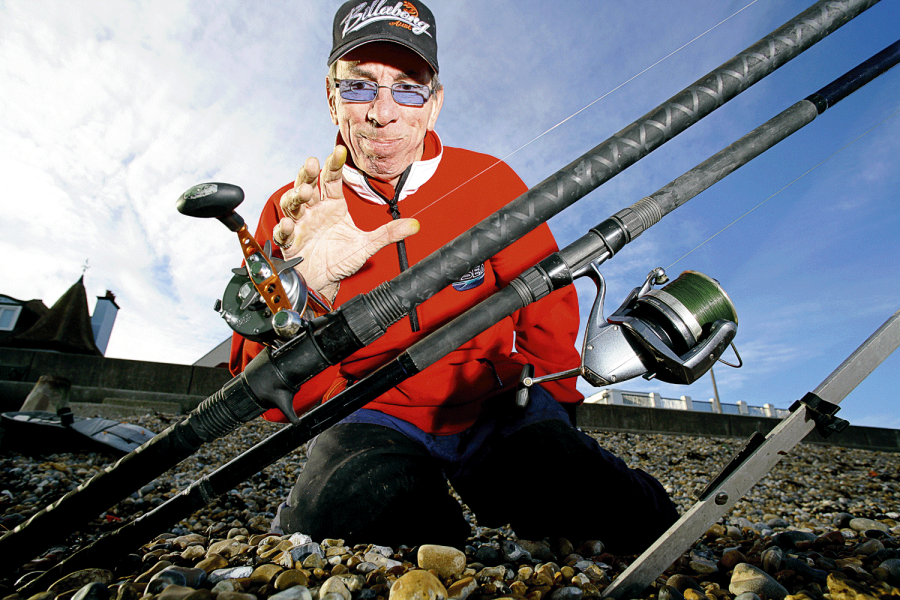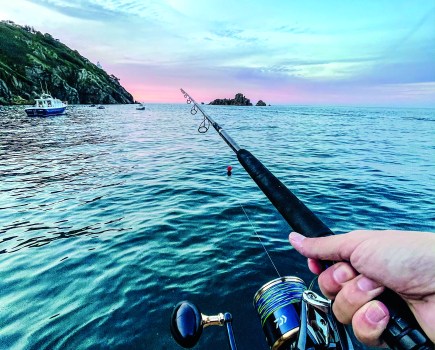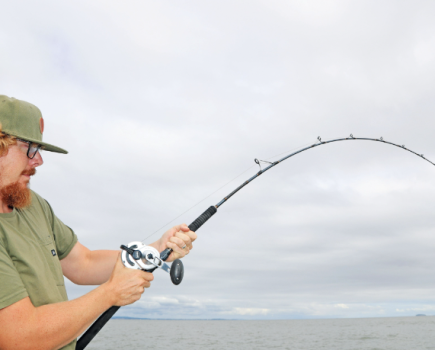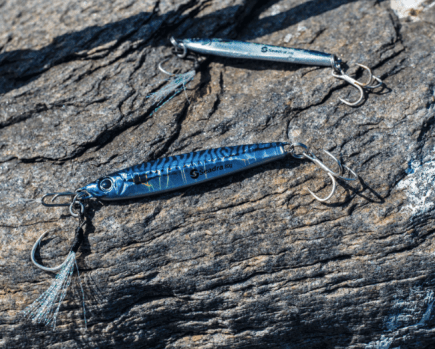Braid became the number one choice among boat anglers when they discovered its lack of stretch boosted bite detection, while the much lower diameter cut through the racing tide like a knife through hot butter.
Line stretch is a big factor when it comes to fishing, but if there is a problem with using braid it is that its lack of stretch puts extra pressure on the hookhold. Softer tipped rods have been produced to combat this lack of stretch, while anglers add a short mono shockleader to their braid to help improve its performance.
Using braid from the shore is not quite so straightforward as it is when downtide fishing from a boat. First, braid cannot be used on a multiplier reel for casting any distance, simply because the coils dig into one another on the spool, especially when stressed via a snag or heavy fish. This results in the line jamming and locking the spool during the following cast.
For those of you wondering why you see pike anglers using braid lines on a multiplier for jerk bait casting, it is because they use heavy, large-diameter braids (80lb) to prevent the coils of line digging into each other. This is not practical for sea angling, because the larger line diameter catches far more tide and drastically reduces casting range, so braid can only be used for shore fishing efficiently with a fixed-spool reel.
Here Alan Yates took a couple of beach casting outfits to the shore – one loaded with mono and the other with braid – to find out which would perform the best…
HOW THE TEST WAS DONE
I set up a test with two rods – one with a standard multiplier loaded with 15lb (0.35mm) monofilament line and the other with a fixed-spool reel loaded with 0.14mm braid.
The test took place early in the New Year on a venue with lots of small dabs, pouting, whiting and rockling. Lugworms, clams and squid were used for bait, and the hooks were size
2. Each identical rig had three hooks, and the same baits were put on the same hooks of each rig.
Casting distance was identical, although the braid rod was fished on the uptide side of the mono to prevent the braid cutting through the mono, should they get tangled or the lines crossed. Casting time was fixed at 20 minutes for each rod.
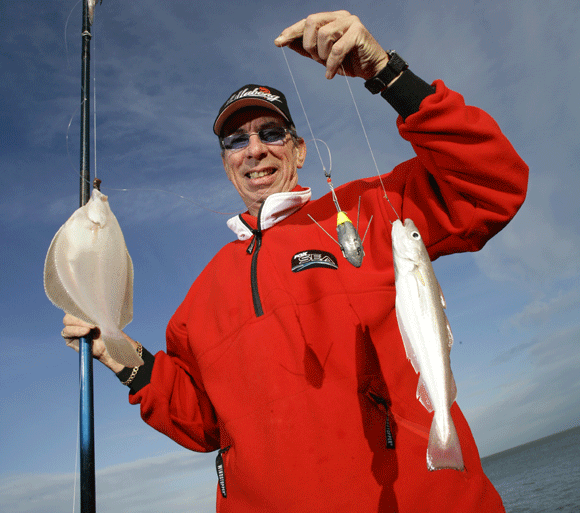
FOR BRAID
1 Braid’s potentially lower diameter promotes longer casting distances with a fixed-spool reel. This is a reality that many fixed-spool reel users are yet to discover.
2 Bite indication is magnified dramatically, not only making the angler more involved in his fishing, but the fishing more enjoyable. Compare this to mono’s massive stretch, which limits bite indication, especially at long range. This can be frustrating when there are lots of fish about.
3 Braid is constructed in tightly woven Dyneema fibres, so is far stronger, tougher and more resistant to abrasion than mono.
4 Braid’s finer diameter combats and cuts through strong tide far more efficiently than mono.
5 Floating and sinking braids are available, with the carp braid lines equally effective for sea angling.
FOR MONO
1 Monofilament’s stretch is a safety cushion when a big fish is hooked. Braid’s lack of stretch transfers sea movement to rod tip, and it is best used from the shore in a fairly calm sea.
2 Mono seems to be more neutrally buoyant than braid, which can sink and drag on the sea bed, become caught in weed or buried in mud.
3 Braid breaks abruptly when snagged, whereas mono’s stretch often allows it to pressure the hookhold gradually and pull free.
4 Braid cannot be used efficiently on a multiplier reel, especially for long-range casting. Similar problems exist with braid jamming in its own coils when uptiding with braid and a multiplier from the boat. A fixed-spool reel is the answer in both cases.
5 Mono is available in a range of bright colours – ideal for field casting. It is also available in clear for clear-water conditions.
6 Mono is far cheaper than braid – 250 metres of 15lb braid costs around £20-£25, while 1,000 yards of 15lb mono can be as little as £8.
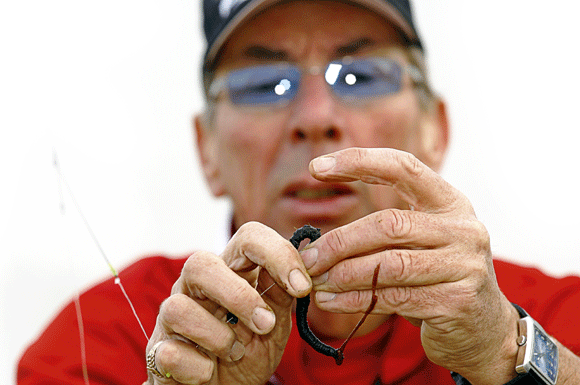
BRAID VERSUS MONO – TEST CONCLUSIONS
1 Over 10 casts both rods caught fish every time, although the mono rod landed considerably more, and the bigger specimens. Sheer coincidence, perhaps, although the test conclusions suggest that the movement of hooked fish on the braided line transmits to the other baits and may put other fish off taking them. Longer and wider spaced snoods would improve this situation.
2 Bites were more apparent on the braid rod, so its time between casts could have been drastically reduced from the 20 minutes used in the test. This could lead to braid catching more fish.
3 Using braid could be deemed unsociable because it will slice through mono when the two lines are retrieved against each other.
4 The use of a mono shockleader (60lb) did make a difference when casting. Braid takes some getting used to because of its lack of stretch, and it’s not the line for the novice.
5 A very low diameter braid could be used – down to 0.12mm. Beware of selecting braid of the same breaking strain or diameter as you do mono, because the whole point is about reducing the diameter of the braid. Look for the new micro braids.
6 The retrieve of the braid on the fixed-spool reel was faster and the movement of even small fish could be felt, giving more enjoyable fishing. However, retrieve carefully to prevent reeling the fish off the hooks.
7 While braid is a solid coloured line – mostly green or black – it is available in red, blue and fluorescent yellow (carp spod line). For those who are worried about fish seeing it, the answer is a clear mono shockleader.
8 Braid’s lack of give is noticeable when the leader knot comes through the rod rings. A tapered leader is the way to avoid the threat posed by a large uni-type leader knot jamming in the rod rings during the retrieve.
9 It’s a myth that braid wears out your rod rings. This might happen on cheaper rod rings, but not with the patterns used by most of the major manufacturers.
10 Braid line is good at short range, such as when fishing alongside a pier wall, for short-range rock fishing, or spinning where the line’s reaction to a snag is transmitted to the rod to give the angler time to react to avoid it.
11 A big advance in lines will come when a braid can be produced with some stretch. This would allow the angler to use a line with a stretch suitable for the venue, water depth and species.
12 Using braid and a lighter rod promotes more enjoyment when catching the small or medium-sized fish.
13 Both lines have their uses and advantages. Shore anglers should consider carrying reels loaded with both line types.
